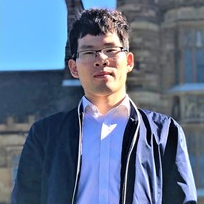Experimental and Computational Design of Novel Structural and Functional Materials for Energy and Sustainability
A special issue of Crystals (ISSN 2073-4352). This special issue belongs to the section "Materials for Energy Applications".
Deadline for manuscript submissions: closed (30 April 2023) | Viewed by 6597
Special Issue Editors
Interests: DFT; computational chemistry; electrocatalysis; CO2 capture & conversion
Special Issue Information
Dear Colleagues,
The search for advanced technologies to develop novel structural and functional materials for wide applications, such as converse and storage renewable energies and advanced functional and composition materials, remains a hot and challenging topic in revolutionizing both the energy and traditional metal system. For the utilization of renewable energies, catalysis will be an essential and powerful tool in making the shift from a fossil-fuel-based to a greener and more sustainable society. However, achieving a better understanding of the fundamental catalysis mechanism for the rational design of highly efficient catalysts is still facing many problems, such as linking catalyst activity to a ‘turnover frequency’ and explaining catalytic performance in terms of ‘structure sensitivity’ or ‘structure insensitivity’. For the revolution of traditional metal materials, developing new structural and functional materials, such as new composite materials and alloy materials, could be a promising solution. To achieve these goals, the relationship between structure and property should be well understood to guide the experimental synthesis. The combination of state-of-the-art theory modeling and experiments provides an ideal approach to address the issues. The present Special Issue on ‘Experimental and Computational Design of Novel Structural and Functional Materials for Energy and Sustainability’ will serve as a platform to report or summarize the progress achieved in this field.
Dr. Tianwei He
Dr. Youchao Kong
Guest Editors
Manuscript Submission Information
Manuscripts should be submitted online at www.mdpi.com by registering and logging in to this website. Once you are registered, click here to go to the submission form. Manuscripts can be submitted until the deadline. All submissions that pass pre-check are peer-reviewed. Accepted papers will be published continuously in the journal (as soon as accepted) and will be listed together on the special issue website. Research articles, review articles as well as short communications are invited. For planned papers, a title and short abstract (about 100 words) can be sent to the Editorial Office for announcement on this website.
Submitted manuscripts should not have been published previously, nor be under consideration for publication elsewhere (except conference proceedings papers). All manuscripts are thoroughly refereed through a single-blind peer-review process. A guide for authors and other relevant information for submission of manuscripts is available on the Instructions for Authors page. Crystals is an international peer-reviewed open access monthly journal published by MDPI.
Please visit the Instructions for Authors page before submitting a manuscript. The Article Processing Charge (APC) for publication in this open access journal is 2600 CHF (Swiss Francs). Submitted papers should be well formatted and use good English. Authors may use MDPI's English editing service prior to publication or during author revisions.
Keywords
- nanoelectrochemistry
- Computational materials
- Energy conversion
- Structural and functional materials
- Theory modeling






